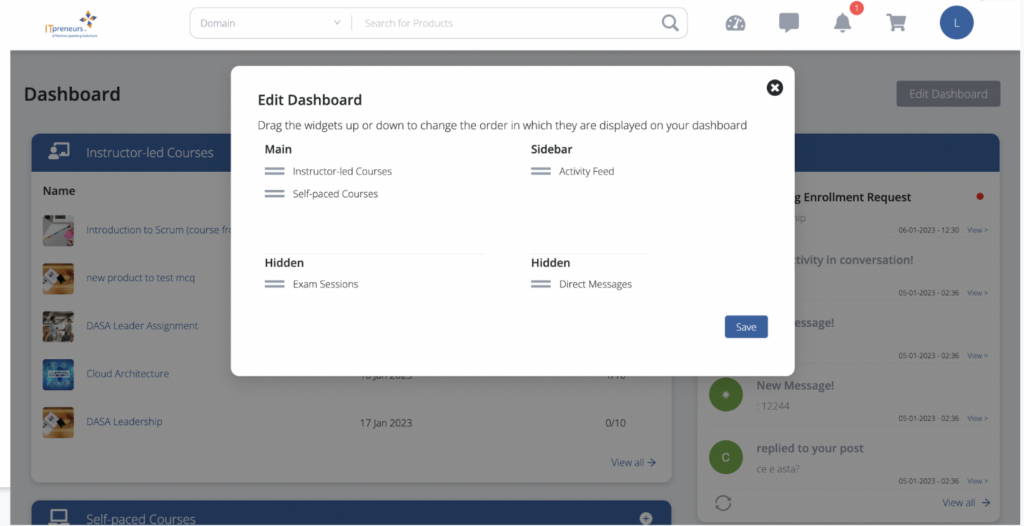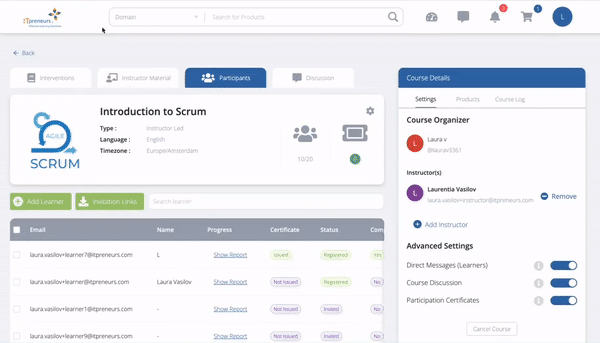Everyone has that little inventor inside them, you do too. Even if you haven’t discovered yours, he is there when you need him. For example, remember the last time you were making a meal of what was left in the fridge? You were creatively using the resources you had, to come up with a new recipe.
And we cannot develop, implement or use cutting edge solutions without the little help of the inventors in the organization. Continue reading to discover, how you as an IT training provider can find your inner inventor and get inspired to try out cutting edge solutions.
New, Change, Innovation, Cutting Edge
The inventors inside us help organizations develop new products and services. But something new or a change is not by default cutting edge. For example, changing to a new email software system will give you new features. However, it might not change the way you communicate. So does cutting edge need to be a completely new invention? Does it have to be like the invention of the television in 1927, which changed how we spend our leisure time or the invention of post-it notes in 1977 that changed how we memorize?
Source: http://magicalcompendium.blogspot.nl/2011/07/innovation-stagnation.html
Not necessarily. If we take a closer look at the iPod, we can see why this product deserves the cutting edge label. Although the iPod was not the first MP3 player on the market it had a tremendous impact on the consumer electronics industry as well as the music industry. Read The Impact of the iPod by Mashable to understand the full impact of the iPod. The success of the iPod was not (only) because of the tool itself, but what you can do with it: having the world of music in your pocket. So the product itself is not cutting edge but the solution, which is the combination of the product and its accompanying services, like iTunes as music service for the iPod is.
What makes a solution Cutting Edge?
It is not always easy to identify what cutting edge is and what is not. One of the reasons is that in a certain industry a technology could have been used for ages, but with a twist or an accompanying service or even better user interface it can become extremely successful. Remember the 90’s, when telcos were introducing landline phones with a built-in camera? Some people tried it, but it never was the success they were hoping for. Fast forward twenty years and the camera on your laptop or cell phone switches on immediately as soon as you start a Google Hangouts conversation? Timing, product features, and marketing all play an important role. But maybe your attitude towards adopting new things is the most crucial factor. There are four characteristics that can help you in adopting cutting edge solutions:
- Pioneer
- Be Different
- Centralize the User
- Surprise
Pioneer
Dare to explore, enter the unknown and embrace uncertainties. Being a pioneer means taking a path that not many have walked before. The good news is that you don’t always have to pioneer with many risks. For example, developing your own eLearning is an expensive investment. You need to invest in software, instructional design, graphical design, audio, LMS. But you can also partner with parties who offer off-the-shelf eLearning solutions, which allows you to explore the world of eLearning without any upfront investments.
Be Different
Differentiation is a key success factor for your business, especially the appearance of being different. You can ask any proud car owner why she loves her car and she will try to highlight its unique features. Learn the 5 Keys to Product Differentiation for Fun and Profit by Marty Zwilling to get the full picture.
Being different requires the skill of thinking outside the box and entrepreneurship to try new things. In the training industry, you can be different because of your portfolio – which unique courses are you offering? Take course delivery as another example, do you offer your learners the choice of selecting the instructor? Are you available during office hours or in the evenings and during the weekend when learners are doing their self-study?
In a previous post – What Would Michael E. Porter Do if He Was Running an IT Training Company?,- Nikolas Dimitroulakis wrote about applying Porter to the training industry and how you can manipulate the five forces to your own advantage.
Centralize the User
A good cutting edge solution is developed from the perspective of the user/client and what their needs are. What devices do they use? What is their attention span?
Knowing your audience and their habits is key here. A solution that is user-friendly has good usability, will be used more, will be loved and your business success will follow. Over the last 5 years, we have seen a tremendous shift and more companies increased investments in the user experience. A good example is the rise of the responsive website that enables a high-quality mobile experience.
Read User Experience: What Is It And Why Should I Care? by Amy Harvey to gain more insight on what user experience is and why it is important.
Surprise
The final characteristic might be the most important one. The element of surprise means that it is something that people don’t expect or not even think they need. A striking example is the iPad. The initial response was that we would not need an extra device in the house. But 6% of the global population own a tablet (source). The surprise can be in the solution on its own or it can be a specific feature, for example, training material that comes with ready-to-go welcome letters for the learners. The surprise component can be related to convenience. It may make life easier for the client or might require a change in their operation. For example, when you want to work with eBooks you have to change your order process and you need the email IDs of the learners to provide access.
Cutting the Edge
As a portfolio and innovation manager, it is my duty to develop new courses in new areas with new delivery methods. Or improve the courseware and course delivery by providing additional components, better usability or complement it with supporting tools. I see most opportunities for the training industry in the space of digital content and virtual classrooms. Digital content can be a lot of things, but it basically comes down to offering content digitally that used to be physical. I’ve been working on our eBook solution for the last 2 years and we are continuously improving the solution, from the actual solution to video instructions and support. More recently we have upgraded the presentation deck for instructors to a browser-based delivery format. But digital content is also eLearning and blended learning. There is a global growth of 7.6% in eLearning (source). Does that not sound like an opportunity?
I challenge you to find your little inner inventor. What is he willing to try? eBooks? eLearning? Virtual classroom? Adopting new frameworks? Spice up the delivery?
About the author

Ellen studies the art of learning. Being a cognitive psychologist, she has the background and knowledge of the science of learning. Having the theoretical knowledge on how the brain works, how we store information and how we retrieve information helps her design and conceptualize innovative learning products. With her creative mind and feel for technology, she is able to turn concepts into products.
As an independent consultant, I advise and support organizations in developing and implementing learning experiences.



